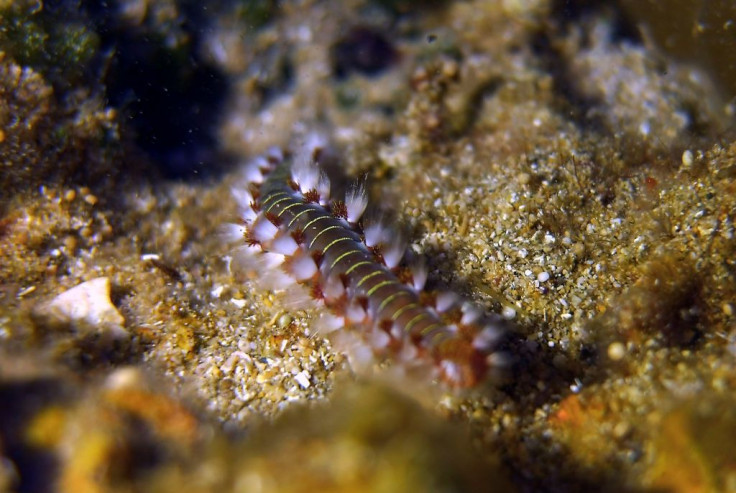See 500-Million-Year-Old Worm 'Superhighway' Created Long Before Dinosaurs Walked Earth [PHOTOS]

A 500-million-year-old worm "superhighway" that existed about 270 million years before dinosaurs walked the Earth has been discovered in Canada.
The northernmost stretches of the United States' neighbor used to be covered by an ancient sea about half a billion years ago. It was initially believed that no creatures had lived in its seafloor, which was thought to be completely devoid of oxygen needed to support life.
However, University of Saskatchewan professor Brian Pratt and his co-author Julien Kimmig, a collections manager of invertebrate paleontology with the Biodiversity Institute and Natural History Museum at the University of Kansas, recently found that tiny worms resided in these ocean sediments and even burrowed through the soil to create a "superhighway" of tunnels. Rocks collected by Pratt 35 years ago from Canada's Mackenzie Mountains in the Northwest Territories showed traces of these fossilized worm tunnels, according to the study published in the journal Geology.
500-million-year-old worm 'superhighway' discovered in #Canada, from @usask https://t.co/1XSo7QrChl pic.twitter.com/GTiALkkfNh
— EGU (@EuroGeosciences) March 4, 2019
500 Million-Year-Old Worm Superhighway Revealed in Ancient Seafloor https://t.co/KxC2rGuvEk pic.twitter.com/DL0dhnozVd
— Live Science (@LiveScienceMag) March 4, 2019
It was only recently that the scientists found these minuscule tunnels that dated back to the Cambrian period -- 543 to 490 million years ago -- following another analysis of the rock samples. Pratt and his colleague missed the worm tunnels the first time around as they are invisible to the naked eye. But Pratt "had a hunch" and scanned them again to see if there is more to be discovered within them, according to the USask website.
Pratt said in the statement that he had been "surprised" to find the worm superhighway within the rocks.
"For the first time, we saw evidence of large populations of worms living in the sediment -- which was thought to be barren," he said. "There were cryptic worm tunnels -- burrows -- in the mud on the continental shelf 500 million years ago, and more animals reworking, or bioturbating, the sea bed than anyone ever thought."
He also explained that it was while he and Kimmig were preparing the rock samples for a separate 2018 study that they saw something they hadn't noticed before.
After noticing the "slight variation in shading," Pratt dampened the rock sample with alcohol, put it under a flatbed scanner and amped up the image brightness and contrast. He then saw a "riot of burrows" hiding with the rock.
According to the study, the tunnels were only about 0.2 to 0.6 inches (0.5 to 15 millimeters) wide and were made by worms that had measured between a millimeter in length to the size of a finger.
The discovery of the tunnels, along with the preserved bodies of worms within the rock, reveals that the ancient seafloor may have hosted a thriving ecosystem instead of being a dead zone like it was believed to be.
© Copyright IBTimes 2025. All rights reserved.





















